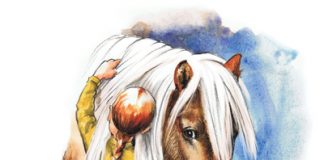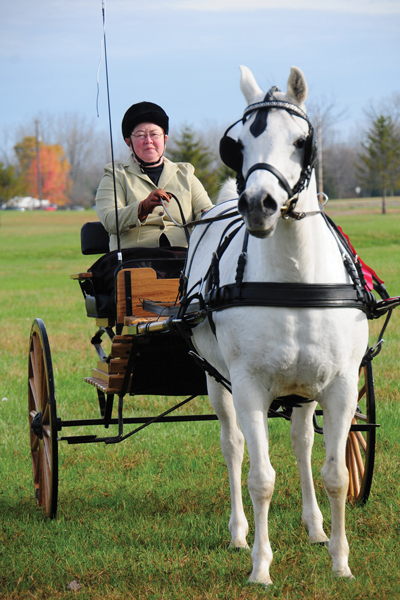
The sport of driving is a beautiful thing to watch, but it’s even more fun to participate. Two top professionals in the sport—Leslie Cashion of Louisville, Ky., and Jacob Arnold of Goshen, Ky.—offer some key points to consider on how to choose a driving horse.
When you’re ready to begin your search for a horse with the mind and body for driving, it’s important to define the type of driving you’d like to do and your budget (with pre-purchase exam and equipment costs factored in).
Cashion, an active clinician who has taught and competed in driving for 22 years through the international levels and holds CAA Level 1 Instructor and Level 2 Driver proficiencies, cautions newbies not to fall in love with the first gorgeous creature they see, but to carefully think through your ability level and personal goals when selecting a horse.
“The animal that catches your eye may be stunning, but if he drives or rides like a fire-breathing dragon while you’re a green driver who needs a reliable Steady Eddie, this won’t be a good fit for you,” she warns.
Arnold has represented the U.S. at four FEI World Driving Championships in the last six years. He trains horses, teaches students and manages the driving program at Hermitage Farm in Kentucky. Also a busy USEF Developing Athlete Program clinician, he thinks most horses can adapt to driving. “Almost any horse can be trained to be correct,” he says. “You just have to find the right way to motivate them. If the horse is forward and likes to work and likes the game, he can overcome some conformational flaws.”
A Mind for the Job
Both experts topped their requirement list for a driving horse by talking about desirable mental traits.
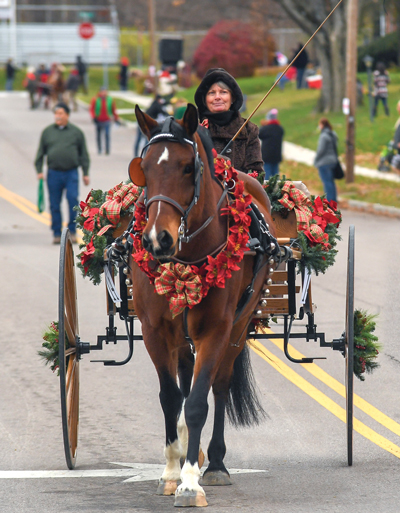
A good mind: This was first on Cashion’s list for choosing a driving horse. She says a good mind for partnership and driving is of utmost importance.
“You want a horse that is not overly spooky, is trusting, and is able to learn new skills,” she says. “Even the most solid horse can spook, but a good brain is based on how they handle their fear. Will they listen to you and respond? Then you can work through scary moments. Do they want to react strongly without any known trigger or lack the ability to work through the scary moment? Then driving may not be for that horse.”
Forward-thinking: At the top of Arnold’s list was a horse that goes toward something he doesn’t know rather than backing away.
“I think all horses can be broken down into backward-thinking or forward-thinking horses,” he says. “Consider the horse that spooks and jumps back versus a horse that either doesn’t spook, or if he does spook, he goes forward. Those are the two basic mentalities of horses.”
Trainable: This trait ranked very high with both Cashion and Arnold. Cashion explains how she evaluates trainability.
“I like to try to teach the horse something new when I try him out,” she says. “I will choose something small, based on what I see in the moment, and tune in to how he responds. Does he want to figure out what I am asking of him, approaching with curiosity? Does he resist and become worried, shutting down or reacting strongly?”
Calm-minded: Arnold explains this as “a quiet, relaxed horse that doesn’t get fussed easily.”
Driving horses need to accept flapping tack, a vehicle following them, and wearing a bridle with blinders that only allows them to see what is directly in front of them, among other things.
He says that just how calm they need to be depends on the task. For combined driving, they may need to be more keen, whereas for pleasure driving and parades, they should probably be “about a 5 on a scale where 10 is super forward and 1 is not.”
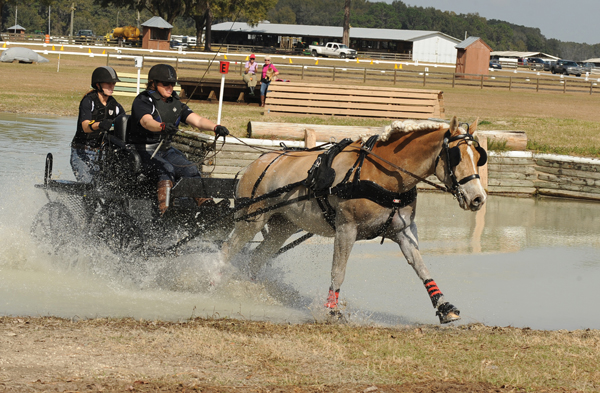
Smart: Arnold prefers his driving horses to be clever. “They can pick up on the game quickly,” he says. “For example, some horses I have driven really love the cones phase of combined driving—they love the game of going in between the cones; they know when we cross the start and when we get to cone 20 and look for the finish.”
Willing to stand: Driving horses need to stand longer than riding horses in order to be hitched or if something needs to be repaired while away from the barn.
“Trying to convince your horse to stand still while adjusting a piece of equipment, if it isn’t already in his toolkit, is a recipe for trouble,” says Cashion.
Good steering: When choosing a driving horse, Arnold emphasizes that it is important that a driving horse steers well and understands steering on two direct reins.
A Body Up to the Task
The other half of the list provided by Cashion and Arnold involved physical attributes: conformation and movement. Here is a quick summary of what they recommend.
A wide chest for more effective positioning of the breastplate to pull the carriage and to allow for easy breathing.
A neck that comes high out of the shoulder and is not too short; this also helps with room for breathing and effective pulling.
A solid, short-coupled build allows for a good back-to-front connection for pulling power.
Strong, ample hindquarters are the engine for pushing.
Good feet and legs for longevity of soundness. Quality of movement is important for competition, but also affects soundness; a naturally good walk and a solid working trot are very important.
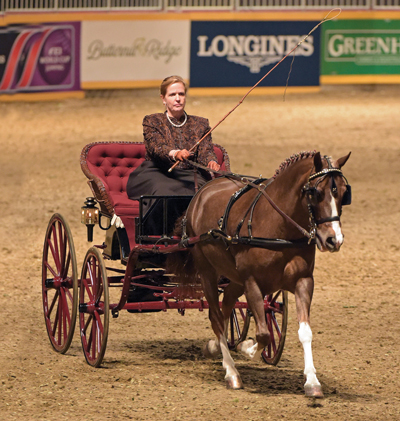
The Wrong Stuff
Cashion says horses that would not be good driving candidates include those that often bolt out of control, are prone to bucking or kicking, or are not willing to work. She also cautions against horses that cannot overcome being very noise-sensitive and those that are not serviceably sound.
“If you don’t feel confident riding or handling your horse, you won’t feel safe sitting behind him in a carriage,” she warns.
Parting Advice
Both professionals encourage others to try driving. “Driving is the most fun you can have while partnering with your horse,” says Cashion. “Buy or train the horse that best fits you. Make sure the people you trust to give advice are acting in your best interest, not their own pocketbooks. The sport of driving has some of the best people and equines in the world, if you know where to look!”
Driving Resources◆ American Driving Society |
This article on how to choose a driving horse appeared in the May 2021 issue of Horse Illustrated magazine. Click here to subscribe!




